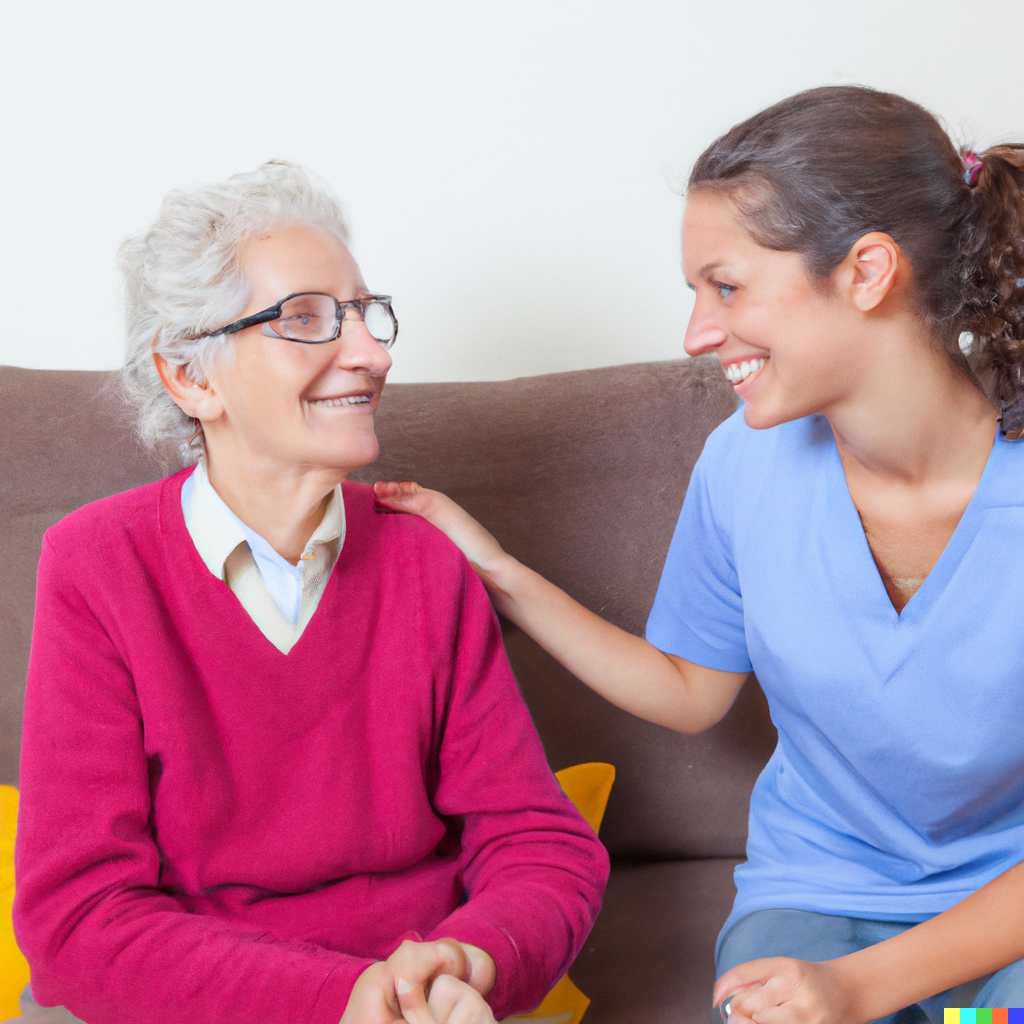What is wrong with this picture?

Last week our Lead Engineer Matt invited you all to try your hand at producing some art using some Artificial Intelligence (AI) tools that he has used to generate images for his Equal Code blog. The request was for images of people giving and receiving care and support, and one of the best submissions (read also: least nightmare-inducing) came from Robert, who sent the image you find above.
While many of us will quickly identify something amiss with the image above, and on closer inspection identify a number of things that the AI tool hasn’t got right, there is no doubt that AI shows tremendous potential for image generation. How long before we fail to spot what has been generated from a series of written prompts, and what has been captured from reality?
However, aside from some of the detail in the image above - the eyes and hands of both characters, for example - what else is wrong with this picture?
Relying on what already exists
Anyone who has ever typed a prompt into an AI image-creating tool will know they are capable of producing some unexpected results. Take for example the following image which was generated from the common prompt ‘A very happy man in fashion from the 1970s cuddling an air fryer in front of a budgie cage’:
However, the reverse is also the case. One of the major limitations of AI image generation is the software relies on existing images. It produces novelty, but not originality, forever reliant on preconceived ideas. This rehearses and replays unhelpful stereotypes and cliches.
When we ask an AI tool to create an image of care, it will typically present familiar images resembling stock photos. Like the image at the top of this blog, they often feature characters in blue uniforms and familiar condescending gestures like the hand on the shoulder (‘there-there dear…’). AI image tools also stick to familiar compositions: the image of two people sat together, doing little else other than falsely smiling at one another is a familiar trope that occurs in everything from an insurance website to a holiday brochure.
We need imagination, not image-generation
The insight these AI tool stereotypes and cliches offer us is that they demonstrate society’s narrow and unrealistic views of what care and support are really like. The reality is that care and support come in many different forms and can be provided by people from all walks of life: a caregiver can be a family member, a neighbour, or a friend; they can be young or old, male or female, and from different cultural backgrounds. It is increasingly less likely that they will be anyone dressed in NHS blue or anyone in a uniform.
At Equal Care, we are trying to shatter these stereotypes and cliches by imagining a new picture of what care and support can be like. We recognize that quality care that provides a better quality of life is not just about fulfilling a list of needs, but about building holistic, long-lasting relationships between caregiver and care receiver. This means making space for emotional support and empathy, as well as the support provided by family, friends and volunteers. It also means recognising the talents and distinct, human qualities of everyone involved in order for us to help build the best relationships of care and support we possibly can.

